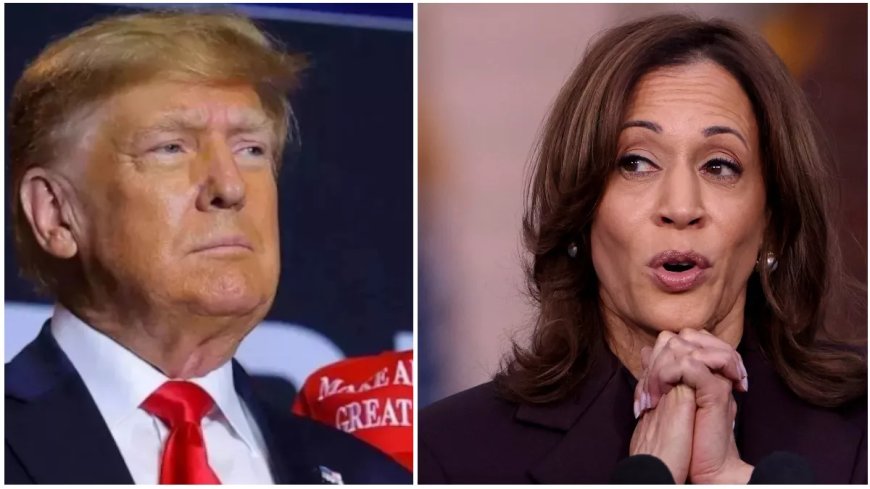Kamala Harris could not even repeat Biden's performance, 7 swing states spoiled the game; How did Trump win?
Donald Trump has won the presidential election for the second time. There is talk of his spectacular victory against Kamala Harris. But all this was possible because of the swing states. Trump reached the presidential chair only due to the victory here. Voters from rural areas also supported Trump more. Due to many issues, Trump's position remained strong in all urban areas.

To become the President of America, it is necessary to win 270 seats. To get so many seats, victory in seven swing states is necessary. This time Trump's Republican Party won all the seven swing states i.e. Pennsylvania, Michigan, Wisconsin, Nevada, Georgia, Arizona and North Carolina. His victory in these states proved to be important in ensuring his return to the White House.
Let us tell you that these swing states are such states which are not traditionally in favor of 'blue' Democrats or 'red' Republicans, hence they are known as 'purple' states. Being one-fifth of the population of America, these states ultimately decide the next US President. There are a total of 93 seats in these swing states. These include 19 seats from Pennsylvania, six from Nevada, 16-16 from North Carolina and Georgia, 11 from Arizona, 15 from Michigan and 10 from Wisconsin.
This is how the swing states voted?
Pennsylvania: Trump snatched this important state back from the Democrats this year. He secured 50.9% of the vote and won all 19 electoral college votes. Kamala Harris secured 48.2% of the vote. In 2012, Democratic President Barack Obama won this state. Pennsylvania has a mix of urban, suburban and rural voters. Their political views are also different. Victory in Pennsylvania proved to be important for Joe Biden to win the US presidency in 2020.
North Carolina: This south-eastern state also witnessed a tough fight between President Trump and Kamala Harris. The Republican won 16 electoral college votes and secured 51.1% of the vote here. Harris lagged behind with 47.7% of the vote. There is a large number of young professionals here.
Georgia: In this traditional Republican stronghold, Trump defeated the Democrats by securing 50.8% of the vote. Harris got 48.5% of the vote here. This state is known for its developed and diverse demographics.
Nevada: Trump won this western US state with 51.5% votes compared to Kamala Harris' 46.8% votes. Nevada voters supported Democrats Obama and Clinton before current US President Joe Biden. This state has a large Hispanic population, a growing Asian American community. There is a strong presence of labor unions here and they often lean towards the Democrats.
Arizona: Trump won nearly 51% of the votes in the Mexican border state facing an immigration crisis. Harris got 48.3% votes here.
Wisconsin: Trump got 51% votes here while Harris lagged behind with 47.6% votes. Trump won here in 2016 and Biden in 2020.
Michigan: Trump got 51.1% votes in this traditional Democratic stronghold. Harris got 47.2% votes.
Trump got lead in rural areas
Donald Trump got more votes in rural areas than in the last election. Analysts believe that the minority community in suburban and urban areas did not work as hard in support of Kamala Harris as it did in support of Joe Biden in 2020. This is the reason why Harris had to face defeat in swing states like Georgia, North Carolina, Pennsylvania and Wisconsin.
Harris could not repeat Biden's performance
In 2020, Joe Biden won by 16 points in New Jersey. But Harris was limited to just five points. Biden won by 10 points in Virginia. But here too Harris was ahead by five points. Trump has got more than 71 million votes. In 2020, Biden got more than 80 million votes. Then Donald Trump had alleged fraud in voting.
Trump also got support from these voters
Harris got less than 80 percent votes in suburban and urban areas like Philadelphia and Pittsburgh. This figure is even less than the votes received by Joe Biden. The special thing is that this area is a stronghold of the Democratic Party. It is being said that a large number of black and Hispanic male voters supported Trump due to economic, cultural and gender reasons.







